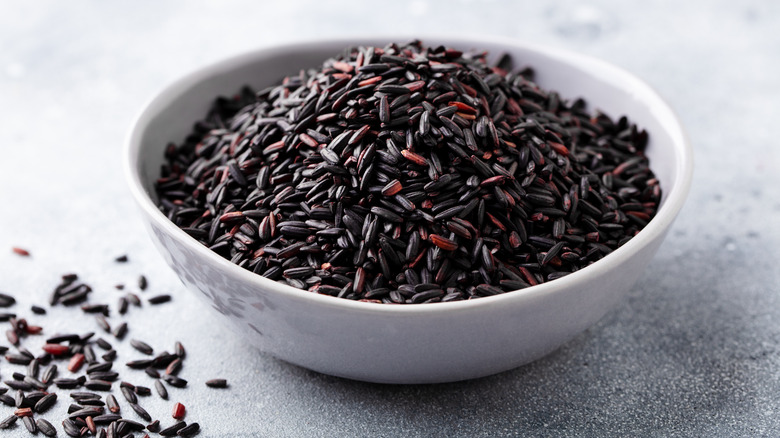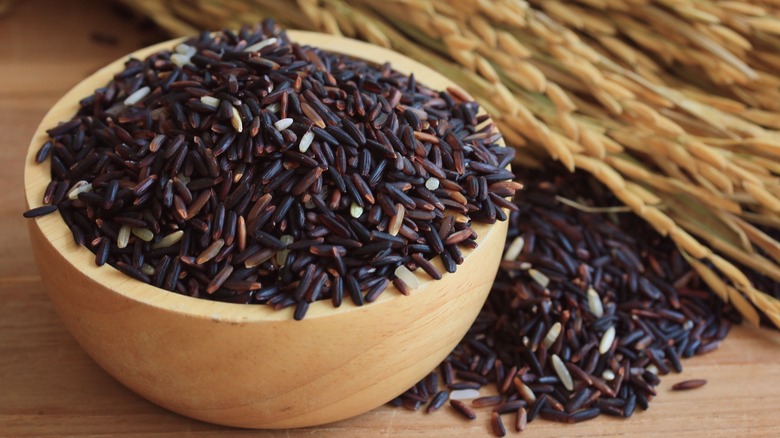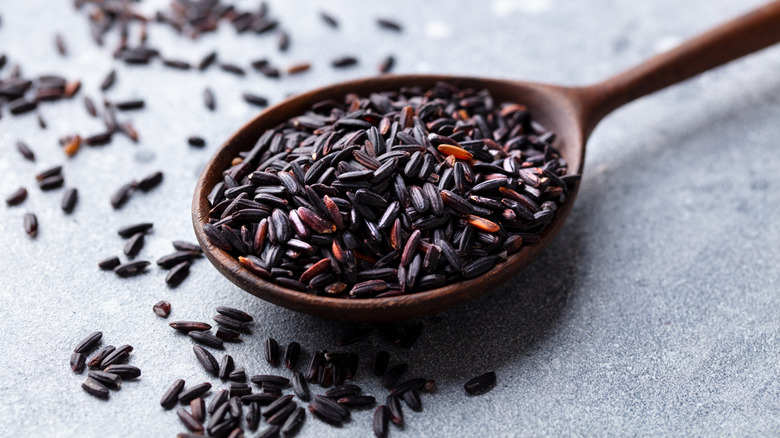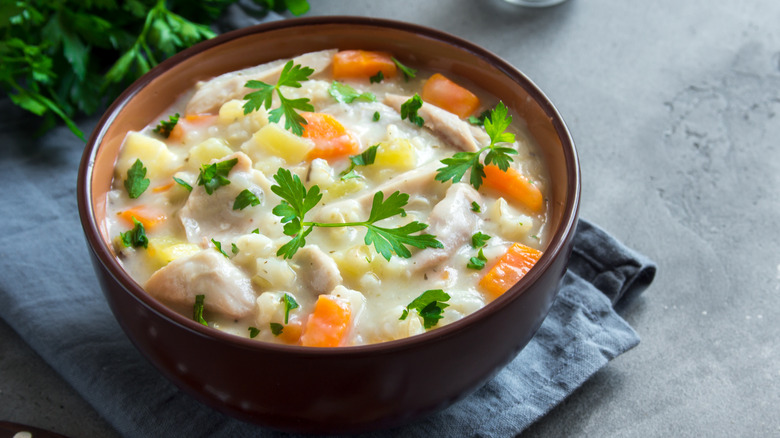What Is Wild Rice And Is It Nutritious?
Rice as an ingredient can be cooked and enjoyed in many forms. Perhaps you like to make yourself a batch of whole-grain rice and beans at the start of every week to make sure that you have access to healthy lunch options at work. Or maybe it's an occasional treat for you, something you only allow yourself to consume on special occasions.
There are many several kinds of rice that can make your meals extra delicious and also help you avoid boredom while meal prepping. As per Food Republic, there are as many as 19 different types of rice available for you to try such as wild rice, white rice, brown rice, Camargue red rice, jasmine rice, sushi rice, and more. Whew, so many varieties, so many possibilities.
There are four types of wild rice and they can be found in North America and Asia. But as Healthline explains, wild rice is technically not rice. This isn't a joke! As it turns out, wild rice is actually grass. It's even harvested as a type of vegetable in Asia.
What is wild rice?
Wild rice may seem similar to other kinds of rice in appearance but realistically speaking, it's actually grass that is most commonly found in the Great Lakes area and is a common sight on the Gulf Coast. As per the LA Times, wild rice has been a part of many cuisines for centuries and can best described as the "seed of an aquatic grass." The crop has edible grains that are harvested and eaten as wild rice and used in kitchens across the world. Before wild rice was widely commercially produced, the LA Times notes that native Americans from the Ojibway tribe harvested and processed the crop.
Those who are used to wild rice and its flavors will be able to tell you that it's easily distinguishable from other types of rice on account of the fact that it has significantly longer grains and a different, "nutty" flavor. It also tends to be darker than other types of rice including brown rice and has a firmer texture that is hard to overlook.
Wild rice is good for you
In general, wild rice is great for your health and can help you in numerous ways. According to Organic Facts, wild rice is low in fat but high in protein: a cup of cooked wild rice gives you around seven grams of protein and 35 grams of carbs. It is also a good source of fiber and can keep you full for a longer period after your meal, something that can help you avoid snacking unnecessarily. Also, researchers have demonstrated that wild rice can potentially help fight heart disease and reduce cholesterol levels. Another piece of good news? Wild rice has plenty of antioxidants that can boost your health.
On the flip side, wild rice may have high amounts of arsenic so it's essential to soak it overnight to avoid harmful side-effects (via FDA). Wild is especially beneficial if you combine it with other types of whole grains in your diet such as brown rice.
Wild rice can be cooked in several ways
As per Cookie and Kate, as far as cooking wild rice is concerned, you've got to remember that it needs time to make just like brown rice, and it also needs a lot of water: at least six cups of water per one cup of wild rice. You're looking at somewhere around 45 minutes, but can make things easier for yourself by using a pressure cooker. You can also add different types of flavors by cooking wild rice with chicken or beef stock.
A Redditor had good advice to offer. They write, "I love wild rice, and it's local in my area, so I can get it pretty much any time. The first trick with wild rice is that you can cut it into pretty much any regular rice dish to give it a more unique texture and flavor." They add that it's particularly great with chicken and mushrooms. Hot tip: you'll love a comforting bowl of chicken wild rice soup. It's a creamy and delicious meal.



